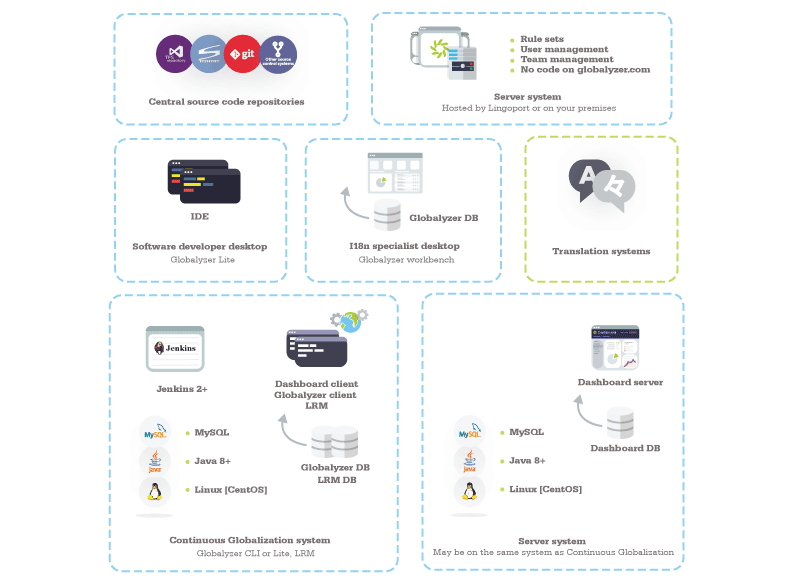Continuous Globalization
Introduction
As shown in the previous scenarios, a number of deployments is possible. This page describes one possible deployment where both Globalyzer and LRM run on the same repositories on a Continuous Globalization system and push the results to a central Dashboard, the i18n specialist works with the Workbench, developers have integrated Lite into their IDE, and resource bundles go back and forth to a translation system.
Target User
Development team members, development management, i18n specialists, L10n management, translators and QA are all target users.
Typical Deployment
LRM and the Globalyzer client or Lite are installed on the Continuous Globalization system, with a database to track the actions and the status of the resource bundles.
The developer desktop has some Lite external tools configured in the IDE.
The i18n specialist works with Workbench.
Note: the Continuous Globalization system needs to be a Linux machine, preferably Ubuntu.
Variations
A number of possible variations exist, depending on your IT constraints.
- Jenkins can be in a master/slave configuration
- The Jenkins jobs must have access to the the LRM, Globalyzer, and Dashboard client, the source code, and the Globalyzer server (via HTTP/s)
- The Dashboard server can be setup on the same system as the Dashboard client or on a different system
- The MySQL databases can be set on a separate system or many separate systems
